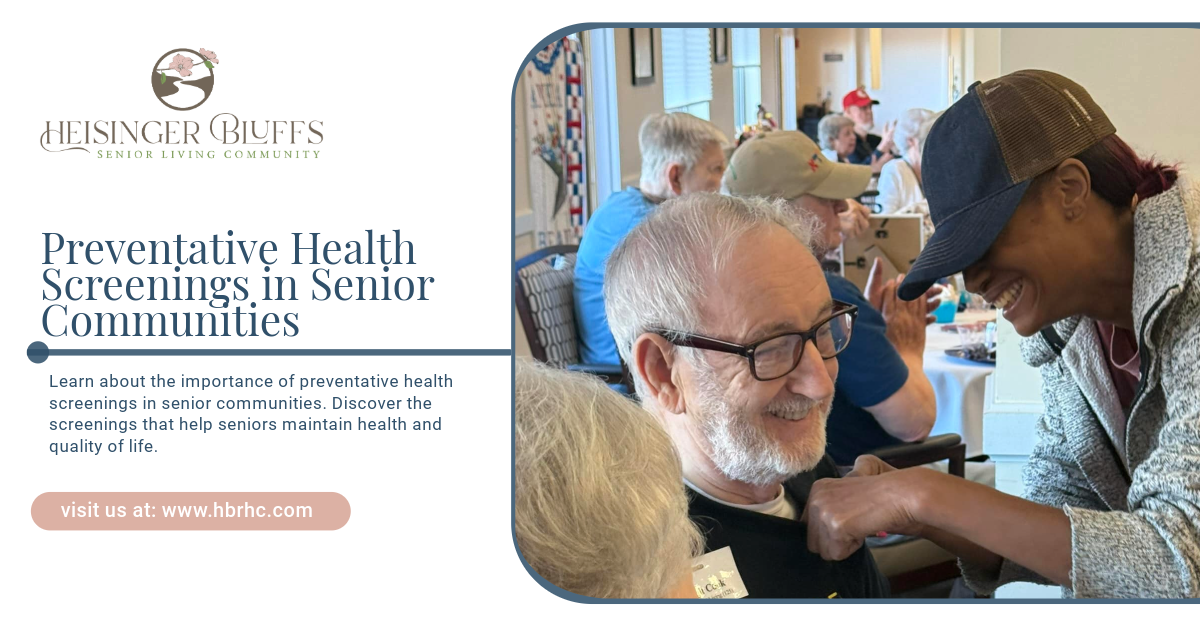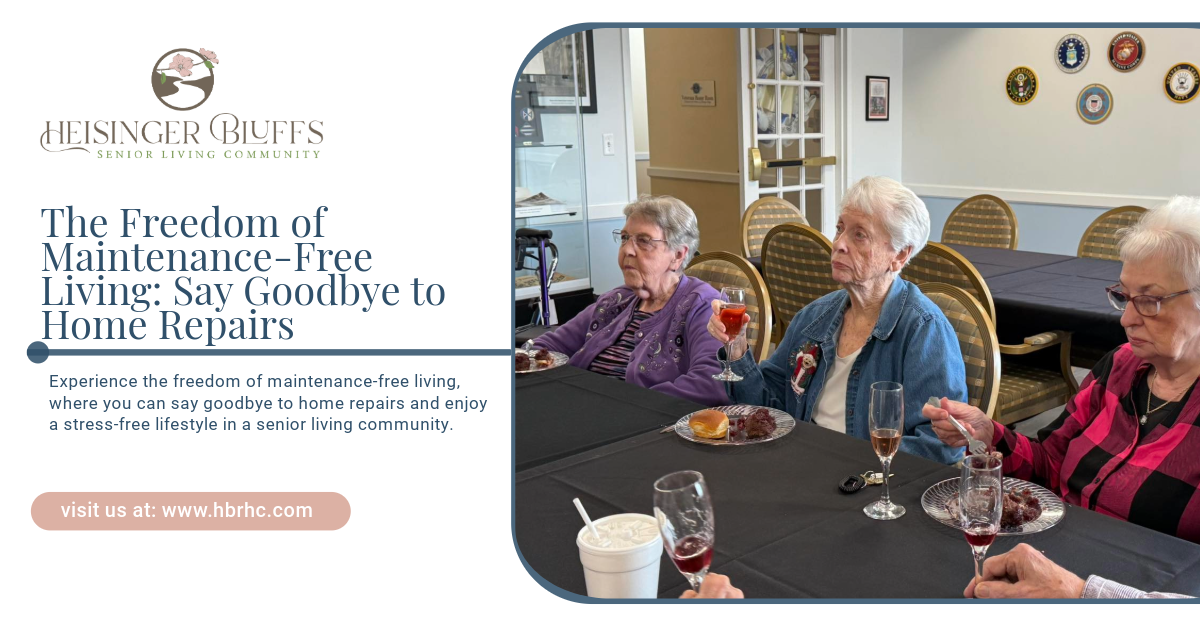What to Expect During a Short-Term Rehabilitation Stay

Recovering from an illness, injury, or surgery can be challenging, especially for seniors. Short-term rehabilitation stays provide the necessary medical care, therapy, and support to help individuals regain strength and independence before returning home. Whether you're planning a stay for yourself or a loved one, understanding what to expect can ease concerns and ensure a smooth recovery.
What Is Short-Term Rehabilitation?
Short-term rehabilitation is a temporary stay at a senior living community or skilled nursing facility designed to help individuals recover and regain independence after a hospital stay. The length of stay varies depending on the individual's needs but typically lasts from a few days to several weeks.
Common reasons for short-term rehabilitation include:
- Post-Surgical Recovery: Assistance after hip, knee, or other major surgeries.
- Stroke Rehabilitation: Therapy to regain mobility, speech, and daily function.
- Injury Recovery: Support after falls, fractures, or other injuries.
- Cardiac or Pulmonary Rehab: Recovery following heart attacks, heart surgery, or respiratory illnesses.
- General Strengthening: Physical and occupational therapy to restore strength and mobility.
Short-term rehabilitation focuses on intensive therapy, medical supervision, and personalized care to help individuals transition safely back home.
What to Expect Upon Arrival
When you or your loved one arrives at a short-term rehabilitation center, the staff will conduct an initial assessment to develop a customized recovery plan. This typically includes:
- Medical Evaluation: A healthcare team will review your medical history, medications, and current health status.
- Therapy Assessment: Physical, occupational, and speech therapists will evaluate mobility, strength, and communication needs.
- Personalized Care Plan: A tailored recovery plan is created, outlining therapy schedules, dietary needs, and personal assistance requirements.
- Tour and Orientation: Staff will introduce you to the facility, explain daily routines, and answer any questions.
Families are encouraged to participate in the admission process to help the care team understand personal preferences and goals for recovery.
Daily Life in a Short-Term Rehabilitation Program
Each day in short-term rehabilitation is structured to maximize recovery while ensuring comfort and support. A typical day may include:
1. Therapy Sessions
Therapy is a critical component of short-term rehabilitation. Most programs include a combination of:
- Physical Therapy (PT): Focuses on regaining strength, balance, and mobility. Exercises may include walking practice, strength training, and balance exercises.
- Occupational Therapy (OT): Helps individuals regain the ability to perform daily activities such as dressing, eating, and bathing.
- Speech Therapy (if needed): Assists with communication challenges, cognitive skills, and swallowing difficulties after a stroke or other conditions.
Therapy sessions are tailored to each individual’s needs and may take place multiple times a day.
2. Medical and Personal Care Support
A skilled nursing team monitors health conditions, manages medications, and provides necessary medical treatments, such as wound care or IV therapy. Assistance with daily activities such as dressing, bathing, and mobility is also available if needed.
3. Nutritious Meals and Dietary Support
Proper nutrition plays a vital role in recovery. Dietitians and nutritionists work with residents to ensure they receive balanced meals that support healing. Special dietary needs, such as low-sodium or diabetic-friendly meals, are accommodated.
4. Social Engagement and Activities
Staying engaged and active is essential for emotional well-being during recovery. Many short-term rehab programs offer:
- Group exercise sessions
- Recreational activities such as arts, crafts, and music therapy
- Social gatherings to encourage interaction with fellow residents
- Family visitation opportunities
5. Rest and Recovery
While therapy and activity are essential, rest is equally important for healing. Residents have scheduled downtime to relax, sleep, and allow their bodies to recover from therapy sessions.
How Long Does a Short-Term Rehabilitation Stay Last?
The duration of a short-term rehab stay varies based on the individual's condition, progress, and recovery goals. Some individuals may stay for a week, while others may require several weeks of therapy before returning home safely. The healthcare team will regularly assess progress and adjust the care plan as needed.
Preparing for Discharge and Returning Home
The ultimate goal of short-term rehabilitation is to prepare individuals to return home safely and independently. As discharge approaches, the rehab team will:
- Conduct a final assessment to ensure the individual is ready for daily activities.
- Provide home safety recommendations, such as installing grab bars or removing trip hazards.
- Offer home exercise programs to continue building strength and mobility.
- Arrange for home health services if additional support is needed.
- Educate family members on how to assist with care after returning home.
In some cases, individuals may transition to assisted living or long-term care if they require ongoing support. The care team will work with families to explore the best options for continued care.
How to Choose the Right Short-Term Rehabilitation Program
Selecting the right short-term rehab program is crucial for a successful recovery. Consider the following factors:
- Expertise and Accreditation: Ensure the facility is licensed and staffed with experienced healthcare professionals.
- Rehabilitation Services Offered: Look for a program that provides physical, occupational, and speech therapy.
- Personalized Care Plans: The facility should tailor its approach to each resident’s needs.
- Comfort and Amenities: Check for private rooms, therapy spaces, nutritious meals, and recreational activities.
- Family Involvement: Choose a facility that encourages family participation in the recovery process.
Final Thoughts
Short-term rehabilitation is a valuable step in the recovery journey, providing the care, therapy, and support needed to regain independence. Whether recovering from surgery, illness, or injury, a structured rehab program helps seniors transition back to daily life with confidence.
At Heisinger Bluffs, we provide compassionate and professional short-term rehabilitation services tailored to each individual’s needs. Our team is dedicated to ensuring a smooth recovery in a comfortable and supportive environment. Contact us today to learn more about our rehabilitation programs and how we can assist you or your loved one.
Frequently Asked Questions
What should I bring for a short-term rehabilitation stay?
Pack comfortable clothing, personal toiletries, any necessary medical equipment (such as glasses or hearing aids), and a list of current medications. Some facilities also allow small personal items like books or photos for comfort.
Can family members visit during a short-term rehab stay?
Yes, most facilities encourage family visits. However, it’s best to check with the facility regarding visiting hours and any COVID-19 or health-related restrictions.
Will Medicare or insurance cover short-term rehabilitation?
Many insurance plans, including Medicare, cover short-term rehabilitation if it is medically necessary. Coverage details vary, so it’s important to verify benefits with your provider before admission.
Sources:
- https://www.medicare.gov/coverage/inpatient-rehabilitation-care
- https://www.verywellhealth.com/geriatric-physical-therapy-5189469
- https://www.uhhospitals.org/health-information/health-and-wellness-library/article/adult-diseases-and-conditions-v1/occupational-therapy-for-older-adults
- https://healthcare.utah.edu/hmhi/resources/nutrition-for-recovering-addicts
- https://www.webmd.com/vitamins-and-supplements/iv-vitamin-therapy-does-it-work











